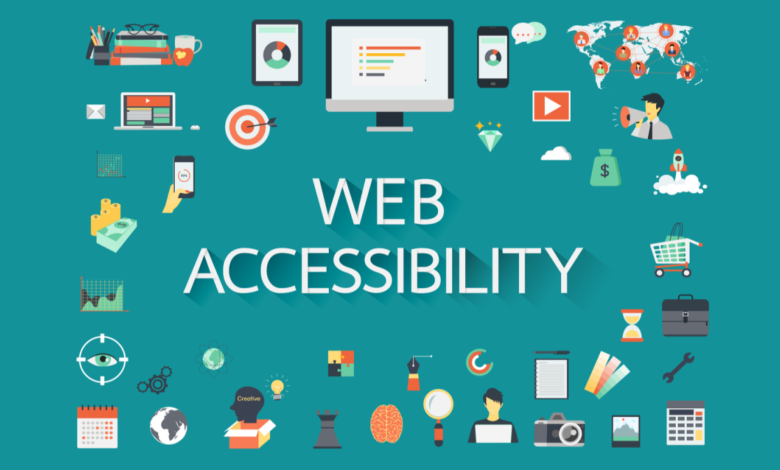Designing for Accessibility: Making Websites Inclusive for All Users

Imagine a world where every digital experience was designed to be inclusive and accessible for all users, regardless of their abilities. Designing websites with accessibility in mind is not just about compliance with regulations; it’s about creating an online environment that welcomes everyone, regardless of their physical or cognitive challenges. Website Development service in designing for accessibility is crucial in ensuring that websites are inclusive for all users. By incorporating accessible design principles and techniques, such as proper color contrast, keyboard navigation, and screen reader compatibility, websites can effectively cater to individuals with disabilities. In today’s digitally-driven society, the need for inclusive web design has never been more pressing. From visually impaired individuals using screen readers to navigate the internet, to those with motor impairments needing alternative input methods – the array of user needs is vast and varied. This article will delve into the importance of designing for accessibility and provide practical tips on how to make websites welcoming and functional for all users. So, let’s embark on a journey towards a digital landscape where no one feels excluded or left behind.
Designing for Accessibility
In today’s digital age, designing for accessibility has become more important than ever. The focus is not just on creating visually appealing websites, but also ensuring that they are inclusive for all users, including those with disabilities. This means considering factors such as color contrast for those with visual impairments, providing alternative text for images and videos, and implementing keyboard navigation options for users who cannot use a mouse.
One of the key principles of designing for accessibility is the concept of universal design, which aims to create products and environments that are usable by all people, to the greatest extent possible. By incorporating accessible design practices into website development from the outset, designers can ensure that individuals with diverse needs can access and interact with digital content seamlessly. Ultimately, designing for accessibility not only benefits individuals with disabilities but also enhances the overall user experience for all website visitors.
Implementing Inclusive Design Principles
Inclusive design principles are crucial for creating websites that cater to the diverse needs of all users. This approach goes beyond meeting minimum accessibility standards and prioritizes designing with the full spectrum of human diversity in mind. By incorporating inclusive design, websites can better accommodate users with disabilities, varying technological capabilities, and different situational limitations. This not only improves accessibility but also enhances the overall user experience for everyone.
One key aspect of implementing inclusive design is focusing on flexibility and customization options. Providing users with multiple ways to interact with a website, such as customizable font sizes, color contrasts, or alternative navigation methods, empowers them to tailor their experience according to their specific needs. Additionally, considering various input methods beyond traditional mouse and keyboard interactions can make a website more accessible for individuals using assistive technologies or alternative devices like touchscreens or voice commands. Embracing this level of flexibility not only addresses individual preferences but also fosters a sense of inclusivity and empowerment among all users
Tools and Resources for Accessibility
When it comes to designing for accessibility, having the right tools and resources can make a world of difference. One essential tool is the Web Content Accessibility Guidelines (WCAG), which provides detailed guidance on making web content more accessible to people with disabilities. Designers and developers can use WCAG as a roadmap to ensure their websites meet the required standards for accessibility.
In addition to guidelines, there are also countless resources available to help make websites more inclusive. From screen reader software like JAWS or VoiceOver to color contrast checkers and keyboard navigation testing tools, technology has made it easier than ever to create accessible designs. By leveraging these tools and resources, designers can gain a deeper understanding of the diverse needs of users with disabilities and implement solutions that truly enhance accessibility.
Legal Requirements and Compliance
Legal requirements and compliance are integral aspects of designing an accessible website. With the increasing focus on digital accessibility, there has been a rise in legal regulations mandating websites to be inclusive for all users. Failure to adhere to these requirements not only exposes businesses to potential lawsuits but also hinders the user experience for people with disabilities. It’s crucial for web designers and developers to stay up-to-date with legislation such as the Americans with Disabilities Act (ADA) and Web Content Accessibility Guidelines (WCAG) to ensure full compliance and mitigate legal risks.
Moreover, incorporating accessibility features into website design not only aligns with legal obligations but also demonstrates a commitment to social responsibility and inclusivity. By considering the diverse needs of all users, organizations can foster a supportive and welcoming online environment that reflects positively on their brand reputation. Designing for accessibility goes beyond meeting legal standards; it illustrates a dedication to equality, diversity, and ensuring equal opportunities for everyone in the digital space.
Conclusion: Creating a More Inclusive Web
In conclusion, user-focused website enhancements play a crucial role in designing for accessibility and making websites inclusive for all users. By prioritizing the needs of individuals with disabilities and diverse user groups, web designers can create a more equitable online experience. Designing for accessibility is not only a moral imperative but also a strategic advantage for businesses and organizations. By making websites inclusive for all users, we can ensure that everyone, regardless of ability, can access information and participate fully in the digital world. Embracing inclusive design principles not only benefits individuals with disabilities, but also enhances the user experience for all users. As technology continues to evolve, it’s crucial that designers and developers prioritize accessibility to create a more equitable online environment. Let’s commit to making the web a more accessible place for everyone by integrating inclusive design into every aspect of website development and maintenance.


